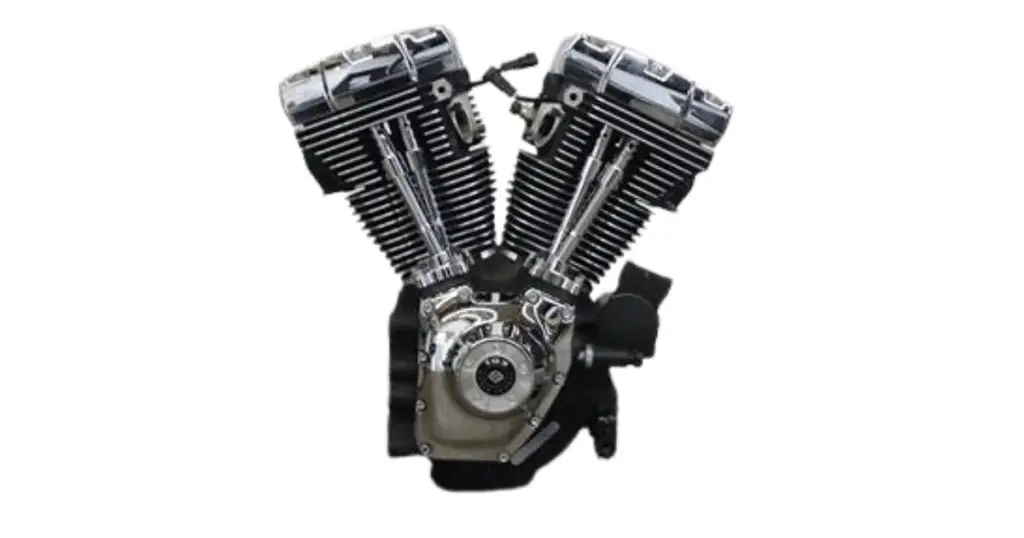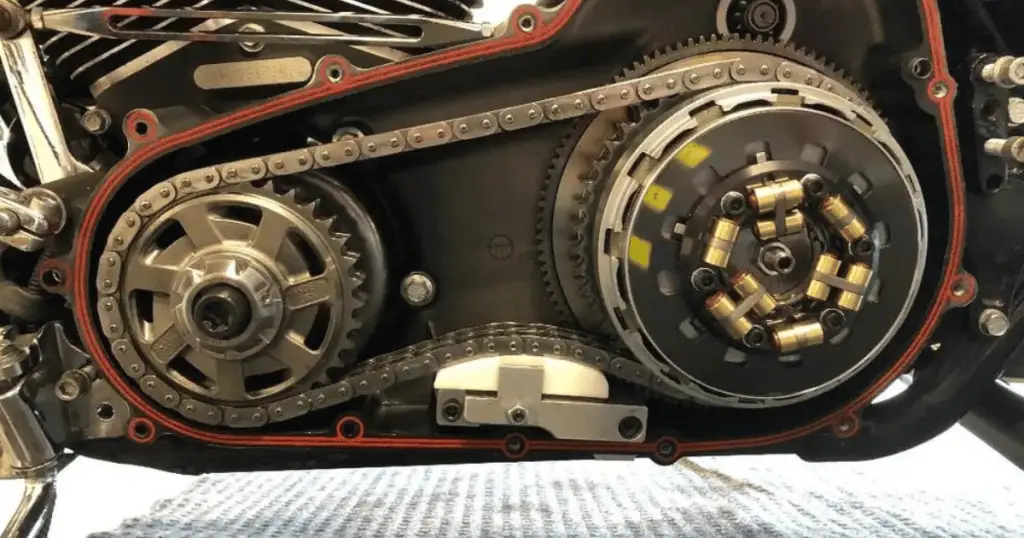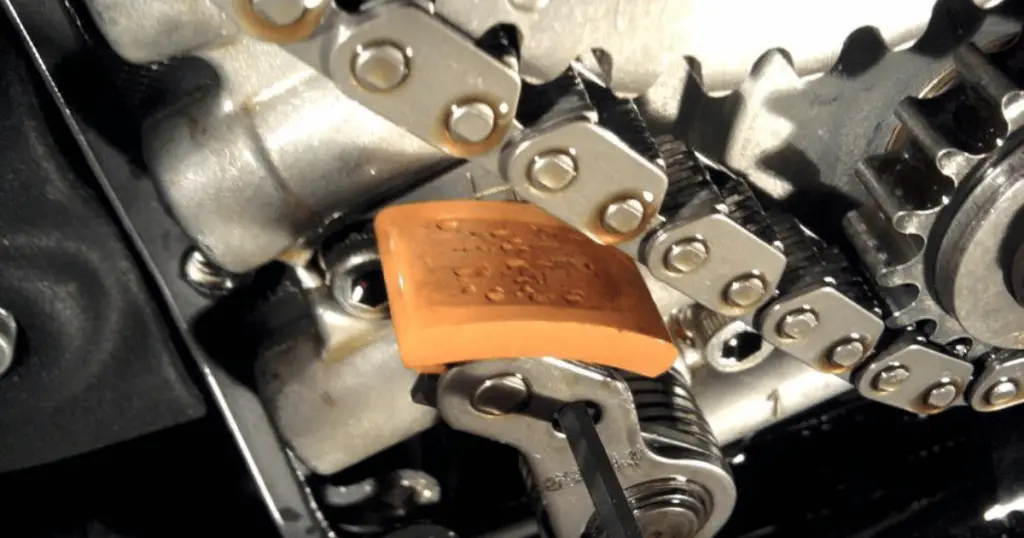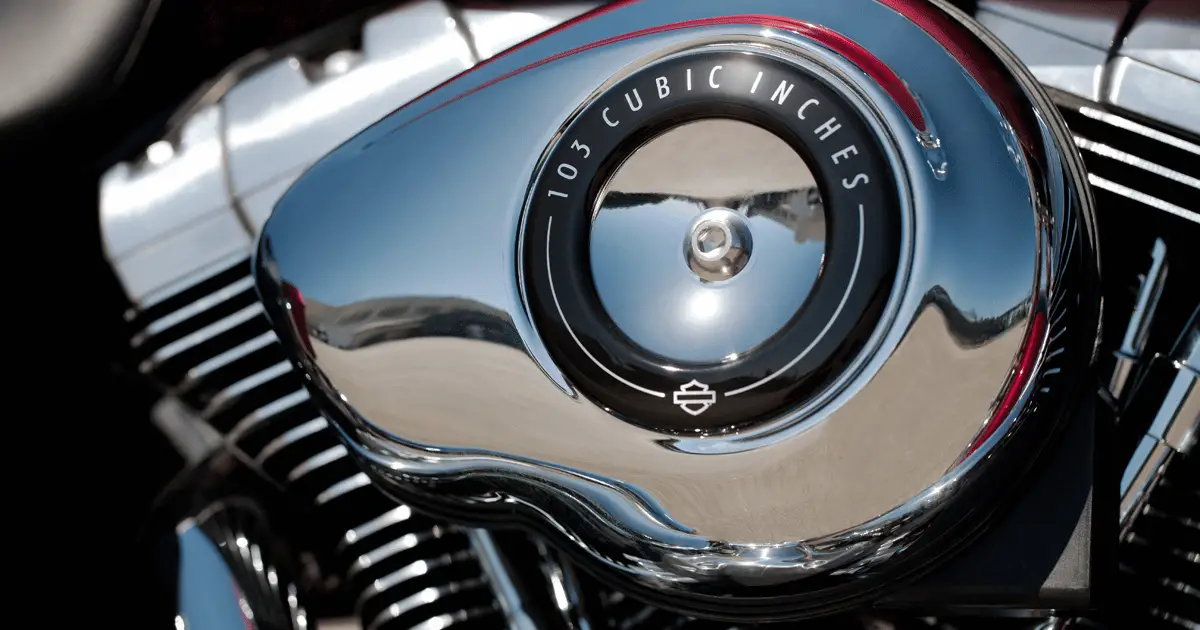Last Updated on January 9, 2024 by Pittalks
The Harley 103 is a good motor, but not how you’d expect. It’s a powerhouse with a notable legacy, but still suffered from some of the issues that Twin Cam engines experienced over their life cycle. But, what problems exactly were these, and what else do you need to know? Let’s dive in.
You’ve probably heard riders rave about the muscle flexed by the Harley 103 engine, a powerhouse that’s as much a part of the bike’s allure as its unmistakable growl that turns heads with every throttle twist. Yet, for every throaty roar and surge of power, there’s a rider out there who’s faced the frustration of mechanical gremlins, from temperamental compensators causing jerky rides to the dreaded knock of an ailing engine. Despite a list of possible pitfalls—think sticking valves, overworked crank bearings, or even the fear of a cracked cylinder head—the 103 has loyalists betting on its performance, swearing by its resilience for a good 75,000 miles, and sometimes much more, with diligent care. But since nothing’s perfect, you’ll find yourself weighing the pros and cons if you’re eyeing one of these engines in a pre-loved Harley, and it’s the sharp split in community opinion that keeps the debate over the 103 as alive as ever. So let’s throttle up to dive into this mess and see where we land, shall we?
A Brief Harley 103 Engine Overview

Tell Me More About The 103 Twin Cam Engine
You might be curious about what exactly the Harley 103 engine is, right? Well, to put it simply, it’s a powerhouse. Built by Harley-Davidson, the 103 refers to the displacement in cubic inches, translating to 1690cc of muscle. This V-twin engine doesn’t just move you forward; it does it with a statement.
How Has The 103 Evolved Over Time?
Over the years, the 103 engine has evolved, becoming a staple in the Harley lineup. Starting as an option over the standard 96 cubic inch engines, it grew in popularity due to its enhanced performance. With each iteration, this engine has embodied the spirit of improvement and strength that you’d expect from Harley-Davidson.
When Did The 103 End, And What Replaced It?
Though all good things come to an end, the discontinuation of the 103 in 2016 wasn’t a complete goodbye. It paved the way for the introduction of the smoother, more powerful Milwaukee-Eight series. While the 103 engines have ridden off into the sunset in new productions, they’ve left behind a roaring legacy—and they’re not forgotten in the pre-owned bike markets.
But moving back in time, how did the Twin Cam compare to its predecessor, the Evo?
– Harley’s Twin Cam vs Evo: Who’s Really The King Here?
Performance of the Harley 103 Engine
Let’s talk about a few characteristics of the 103:
- Its power output, and other performance stats
- It’s sound, relative to other Harley engines
- A direct comparison between the 103 and its successors
Power Output and Performance Metrics
Wondering about the oomph factor? You’ll find that the Harley 103 engine packs a solid punch with power and torque that make it stand out. The exact figures might vary based on the model and tuning, but you’re looking at sheer performance that can handle the highway and byways with unwavering confidence.
How Does The 103 Sound?
There’s nothing quite like the classic Harley roar. Straddling a bike with a 103 engine, you’ll feel that deep, rolling thunder billowing from beneath you. It’s an aural signature that tells the world you’re not just riding; you’re making a statement.
How Does Harley’s 103 Compare to Their Other Engines?
How does the 103 stack up against other Harley engines? It’s like comparing titans. The 103 provides a beautiful balance between the smaller engines and the larger, newer Milwaukee-Eight models. It’s this sweet spot of rumble and strength that has won it so many fans.
Related:
– The Harley 103 vs 107 Engine Showdown
– Twin Cam vs Milwaukee 8: Who’s The Harley Engine King?
Overview of Harley Davidson 103 Engine Problems

Compensator Problems and Their Impacts
You may have heard the term ‘compensator problems’ floating around. The compensator’s job is to smooth out the raw power of the engine, and when it’s not working right, your rides can get choppy, and the transmission might even suffer damage.
Valve Issues and Starting Difficulties
Sticking valves can really get under your skin, especially when they lead to hot start problems. Thanks to carbon buildup, these problematic valves may force you to sweat it out before hitting the road.
Worn Crank Bearings and Effects on Engine Smoothness
When riding, smoothness is key, and that’s where crank bearings come into play. Worn-out bearings can rob you of that silky ride, leading down a bumpy road to potential engine failure.
Serious Engine Problems
Unfortunately, the 103 experienced more serious problems as well. Problems like:
- Cracking cylinder heads, and seizing pistons
- Spontaneous knocking
- Miscellaneous ignition issues and electrical faults
Cracked Cylinder Heads and Seized Pistons
Cracked cylinder heads and seized pistons are the stuff of nightmares. These can rear their ugly heads due to overheating or a sudden impact, and they come with a hefty price tag for repairs.
Engine Knocking Causes and Symptoms
Knock, knock. Who’s there? Unfortunately, it might be engine knocking. This can happen due to low-octane fuel or timing issues, and it’s something you’ll want to address to avoid bigger problems.
Ignition Issues and Electrical Faults
Ignition problems are often a product of the mysterious electrical system gremlins. If you’re experiencing sporadic firing or your bike’s just refusing to start, electrical faults could be to blame.
Fuel System and Twin Cam Problems
Amongst the 103’s internal woes, a few issues stood out:
- Fuel injection failure and stuttering
- Prone to coolant leakage and over heating
- Cam chain tensioner wear and failure, present in most Twin Cam engines
Fuel Injection Stuttering Problems
Nothing ruins a good ride like fuel injection stuttering. It’s jerky, it’s annoying, and it directly affects your engine’s performance. It’s a sign that your bike’s heart isn’t getting the smooth flow of fuel it needs.
Coolant Leaks and Engine Overheating
Coolant leaks can spell disaster, leading to engine overheating. Think of it as running a marathon without a water bottle—you’re going to overheat, and so will your engine without its vital cooling fluid.
Cam Chain Tensioner Wear in Twin Cam Engines
Within the beating heart of your Twin Cam, including the 103, is the cam chain tensioner. And when it starts to wear out prematurely, it’s trouble with a capital T. You’ll want to keep an eye on this to avoid a breakdown.

Engine Longevity and Care
Let’s talk about how long a 103 typically lasts, the importance of maintenance for this engine in particular, and what you can do to make it last longer.
How Long Does A Harley 103 Last?
On average, a well-maintained 103 engine could see you hitting the sweet spot of 75,000 to 150,000 miles. That’s a lot of road trips, sunrise rides, and sunset runs.
How Important Is Maintenance for The 103?
Proper maintenance isn’t just a recommendation; it’s a requirement for longevity. Follow those maintenance tips, and your 103 engine won’t just last; it’ll thrive.
Tips for Prolonging The 103’s Life
Want to keep your engine humming for the long haul? Regular check-ups, gentle warm-ups, and smart riding can help you extend its life. It’s all about the love and attention you put in.
Diving Deeper Into Harley 103 Engine Maintenance Tips
Routine Cleaning and Oil Changes
Let’s talk maintenance. To keep your 103 engine purring, cleanliness and fresh oil are your best friends. Regular cleaning wards off corrosive grime, while oil changes keep everything running smoother than a well-oiled—well, you know.
Monitoring Engine Temperature
Keep a watchful eye on the engine temperature because overheating isn’t just a summer problem. It’s an all-season-affects-your-engine-health kind of problem.
Following the Manufacturer’s Maintenance Schedule
Harley knows best, right? Sticking to the manufacturer’s maintenance schedule is a sure-fire way to ensure your 103 engine’s health. Treat it like the gospel to motor longevity.
You should be aware of this issue, however: Harley Oil Pressure Problems? Read This! (Help Is Here)
Fuel and Oil Recommendations
Using High-Quality Fuel for Best Performance
Fill ‘er up—but not with just anything. High-quality fuel ensures your engine performs at its best and could save you from some of those knocking nightmares.
Choice of Oils and Their Impact on Engine Health
The oil you choose is like picking the right elixir for eternal engine youth. Go with the good stuff, and your engine will thank you with smooth performance and protection against wear and tear.
Importance of Using Manufacturer-Recommended Products
When Harley-Davidson recommends a product, it’s not just a suggestion; it’s a key to optimal engine performance. Trust in their wisdom, and your engine will reward you.
What Does The Community Think About The Harley 103?
As you may have guessed by now, the community is split on the 103. Some riders prefer to stay away entirely, while others think it’s one of the best engines ever made by Harley.
Is The Harley 103 A Good Engine?
Riders have mixed feelings about the 103 engine. Some will sing its praises from the rooftops, while others might grumble about reliability. It’s a spectrum of experiences as varied as the riders themselves.
Expert Opinions on Performance and Reliability
Experts weigh in regularly on the 103, and there’s no shortage of opinions. Performance? Top-notch. Reliability? A little more contentious. It seems not all experts can agree, making it quite the topic of conversation.
Lets go back in time for another comparison: Twin Cam 88 vs 96: Which TC Is Really The King?
Divided Opinions and Personal Preferences
And then, of course, there are personal preferences. Some riders can’t imagine life without their 103’s power and roar, while others would rather not take on its mechanical quirks. To each their own, as they say.
Frequently Asked Questions
The Harley 103 engine, while renowned for its robust performance, is susceptible to a range of issues. Common problems include excessive oil consumption, which can stem from internal wear and tear, and overheating, often due to inadequate cooling or harsh riding conditions. Additionally, the engine can experience premature bearing wear and tensioner system faults. Regular maintenance and adherence to service schedules are critical in mitigating these problems, ensuring the longevity and optimal performance of the engine.
Identifying overheating in a Harley 103 engine involves watching for several key symptoms. Common indicators include engine pinging or knocking, a noticeable drop in engine performance, and unusual smells or smoke emanating from the engine area. Additionally, an overheating engine may cause the motorcycle to stall more frequently or display higher than normal temperature readings. Addressing overheating promptly is crucial to avoid long-term engine damage.
Excessive oil consumption in the Harley 103 engine can be attributed to several factors. Worn piston rings or cylinder wall damage can lead to oil seeping into the combustion chamber, while faulty valve seals may also contribute to oil loss. Regular check-ups and addressing these issues as soon as they are detected can help maintain the engine’s health and prevent more serious complications.
The Harley 103 engine has been noted for having issues with its tensioner system. The cam chain tensioner, in particular, is prone to premature wear. This wear can lead to reduced engine performance and, if not addressed, potential engine damage. Regular inspection of the tensioner system and timely replacement of worn components are key to maintaining the engine’s functionality.
Preventative maintenance is vital in avoiding common issues with the Harley 103 engine. This includes conducting regular oil changes with the recommended oil type, keeping an eye on and adjusting the tensioner system as needed, and monitoring the engine’s temperature and overall performance. Proper lubrication of bearings and other moving parts is crucial, as is ensuring the motorcycle undergoes regular servicing and inspections by a qualified technician. Adhering to these practices can significantly reduce the risk of common engine problems and prolong the engine’s life.


